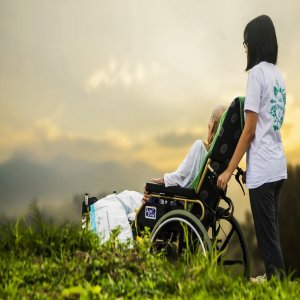
Accessible Transportation for People Living with Disabilities
About 85 percent of Mexicans use a combination of public transport, biking and walking to get around, according to a report by SEDATU. Despite this, only 40 percent of the urbanized surface is meant for public transport. The rest goes to private means of transportation, namely cars. This inequality puts disadvantaged people in a more precarious position. One disadvantaged group of particular importance is people living with disabilities.
Mexico’s 2020 population census showed that approximately 16.5 percent of its population live with some kind of disability, as stated by dis-capacidad. What this figure does not show is how those people live and move in their daily lives. People living with disabilities not only have to deal with rough terrain and public spaces that do not account for them, they also need to navigate through sometimes unfriendly and sometimes outright hostile mobility options, as recounted in YoTambien.
People living with disabilities also have to face many other neglects of their human rights, brought on partly by a lack of adequate public policy that focuses on inclusion by improving social, economic and infrastructure conditions. Instead public policies focuses only on providing financial support, which reaches less than 10 percent of those in need, as discussed in an article by El Universal. People living with disabilities also, like many other vulnerable groups, have to deal with more than one kind of disadvantage and often find themselves in the intersection of poverty, dependence and lack to access to their fundamental rights. Hence, the need for intersectional policies.
While it is clear that there is a lot more to be done, both in mobility and the broader provisions for people living with disabilities, government agencies have aligned themselves with international efforts to ensure better spaces for better lives. One example of this are urban planning efforts in accordance with the UN’s Sustainable Development Goals. There has also been a shift in funding that reflects a change in paradigm, such as cutting funds from the program for public transport accessibility for people with disabilities (FOTRADIS) in the 2021 budget to have the Ministry of Communications and Transportation (SCT) oversee that public infrastructure and mobility services adhere to regulations that have people living with disabilities in mind, as stated by the congress channel. These new regulations, such as the current administration’s city planning manuals or the guides for emergent city mobility in the context of COVID-19, aim to build better, more sustainable cities that include the principles of universal design and people-based urban planning.
















